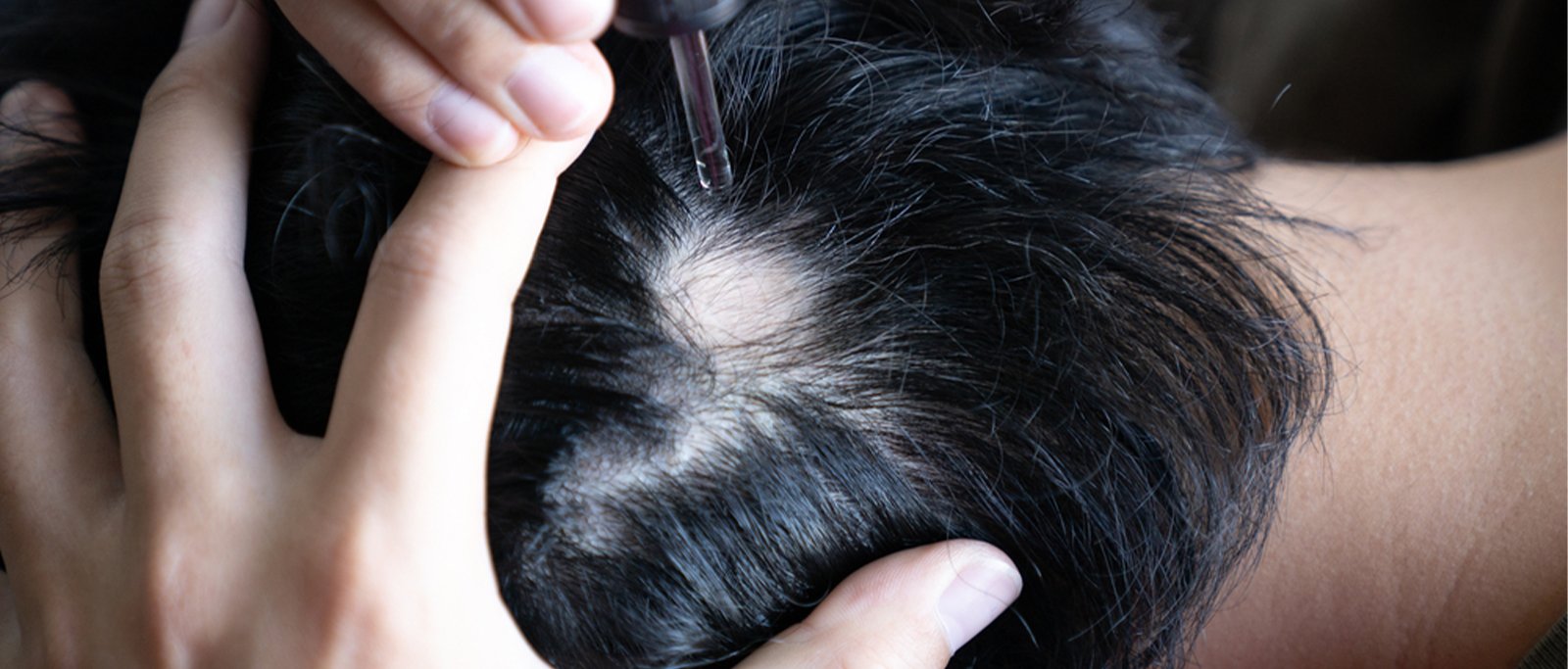Alopecia areata is a skeptical condition where a person suffers from unpredictable hair loss which results in more than one circular bald patch on the scalp which cannot be noticeable at times. Although, they are noticeable when they overlap each other. In some cases hair loss takes place on the face, body, eyebrows, and eyelashes Generally, hair loss is the only symptom of this condition. This condition develops when the immune system strikes the hair follicles which ultimately results in hair loss. Alopecia areata is thought to be an autoimmunity disease that may trigger other autoimmunity diseases. People who are suffering from this condition have higher chances to get diagnosed with another autoimmune disease like thyroid, Type one diabetes,
vasculitis, multiple sclerosis, coeliac disease vitiligo (a condition where lighter patches appear on skin), and other autoimmunity diseases.
Alopecia areata can be a genetic problem or it can also be caused due to an abnormal immune system. This abnormality results in autoimmunity, where a person’s immune system which is meant to defend the body mistakenly damage the cells of the body. Cells that are attacked are hair follicles (a tunnel shaped structure that results in hair growth) Due to
this damage the size of follicles decrease and cease the growth of hair which ultimately results in hair loss.
The amount of hair loss and regrowth of hair is different in all cases it usually depends on person to person. In some cases, hair regrows and this condition does not occur again whereas, in some cases this process takes years and in other cases, hair regrows temporarily and falls again.
Currently, there is no precise treatment for this condition although, there are various options like cortisone injection available which may help in increase of speed in regrowing of hair. Other options available are medicines and light therapy which is also known as photochemotherapy or phototherapy.
It is recommended to consider more than one treatment to see a major difference. There are cases where people got rid of this disease permanently due to proper treatment.
FAQs
There are various effective treatments for this condition
Some of them are mentioned below
- Steroids injections are the most common form of treatment for mild/patchy alopecia. In this, the injection of corticosteroid is given at the area where there is a loss of hair
- Oral corticosteroids were tablets as prescribed by the doctor
- Topical immunotherapy (DPCP) is done with the help of chemicals which may result in new hair growth within the time period of six months. This treatment has to be done continuously to maintain the regrowth
- Immunomodulators are Drugs that help blockage the immune response
- Corticosteroid creams, ointments, or foam
- Minoxidil is applied to the scalp, beard or eyebrows. This is most effective for people with limited alopecia.
Maximum patients are treated within a year which means the hair is regrown in less than a year with proper treatment and medication. It depends on person to person because effectiveness for every person differs depending on their genes and various other factors
Mostly this disease is diagnosed in childhood or adulthood but one cannot rely on this because there are cases where people diagnosed with this condition of all ages. The causes of alopecia areata are not yet Completely known by researchers but most probably it is on a genetic basis. It can trigger many other diseases like diabetes, thyroid disease, arthritis, vitiligo (lighter patches all over the skin).
The only symptom which is detected in every Alopecia patient is hair loss. Although, hair loss from a different body part is detected till now. Mostly, Smooth and circular patches are developed on the scalp which may overlap each other In some cases, hair loss from the face, eyebrows, eyelashes, and body is also detected. Other than this there are no symptoms of alopecia areata.
The cause of alopecia is still unknown by the researchers. Although there can be various causes of alopecia areata observed in patients. The most common one is a genetic factor. Although, in some cases, severe stress can also cause Alopecia areata.

